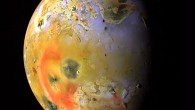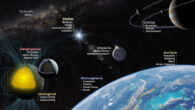The dwarf planet Ceres hosts permanently shadowed areas in its polar regions, and these regions are an interesting analog to Mercury and the Moon. Ceres’ permanently shadowed regions were mapped by NASA’s Dawn spacecraft, and, thanks to scattered sunlight, bright deposits were discovered in a fraction of the permanently shadowed regions. To arrive at a clearer understanding of the nature of cold-trapped ice deposits on Ceres, researchers from...




















